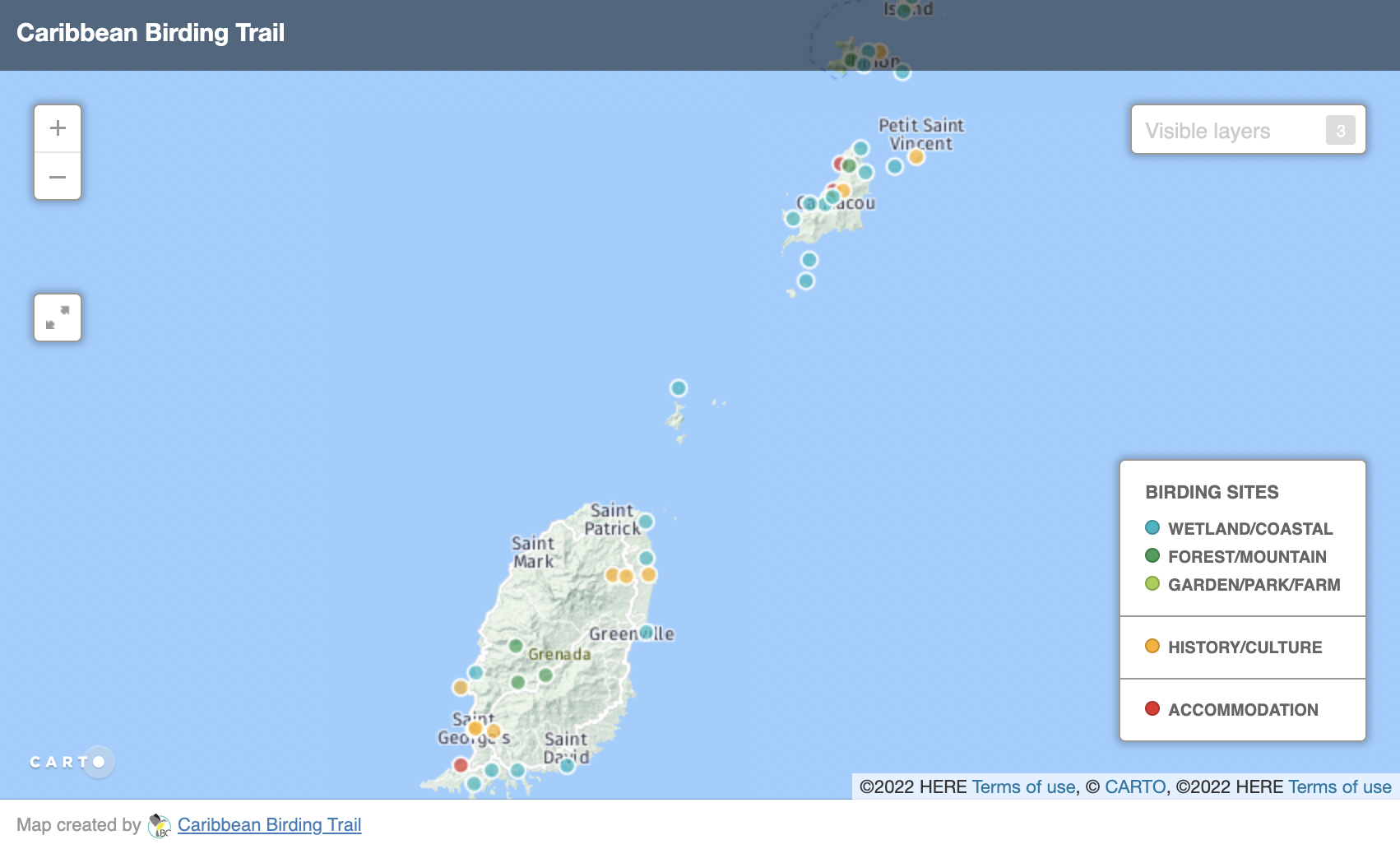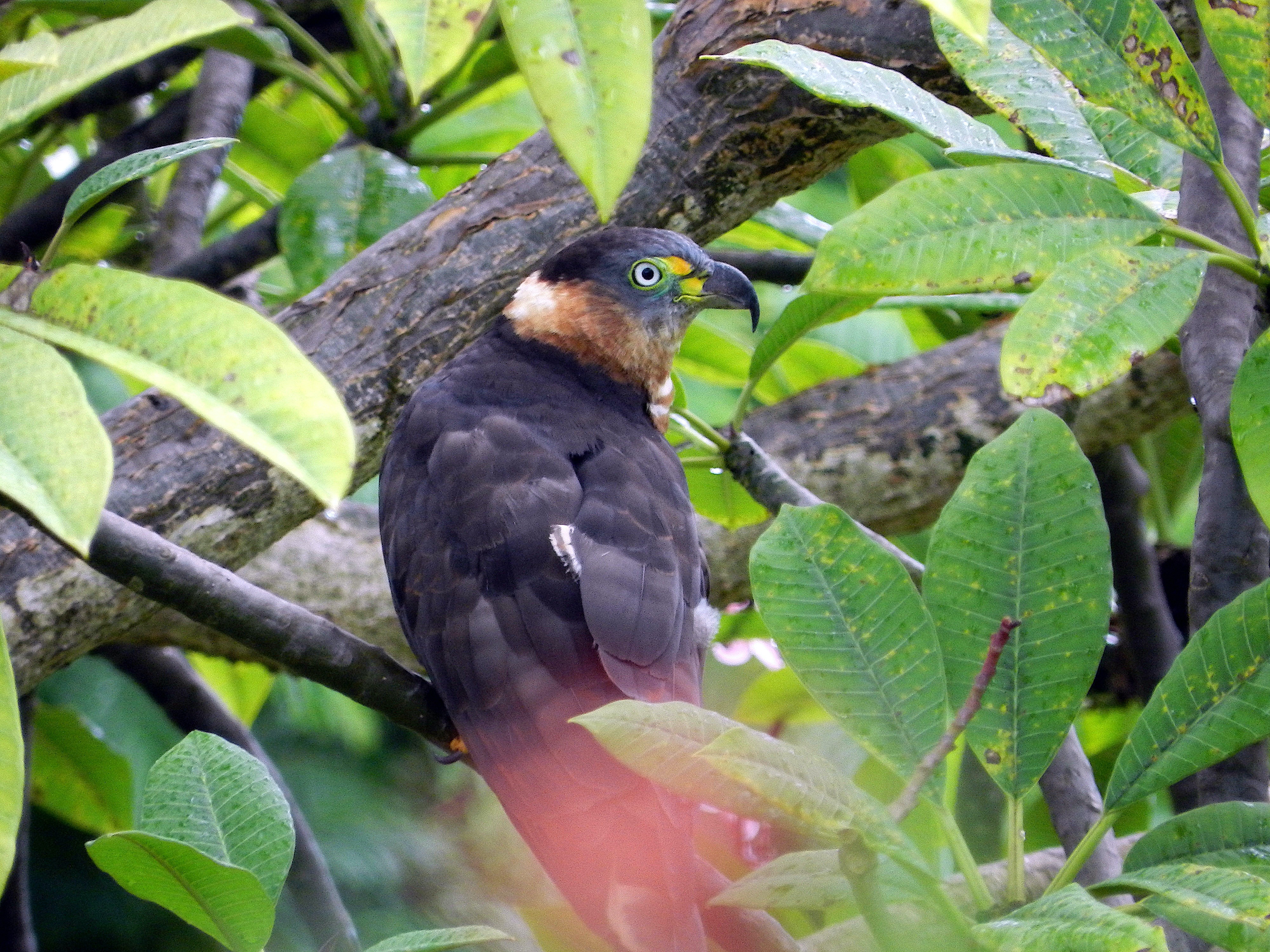It’s that time of year again! BirdsCaribbean is hosting its annual celebration of Global Big Day—the biggest birding day of the year—on Saturday, May 14, 2022.
For the first time ever, Grenada has a country team – the Grenada Hook-billed Kites!
We’re hoping to get as many Grenadians as possible (near and far) to join forces and count as many birds as possible on Saturday – even 10 minutes in your backyard helps!
This year, BirdsCaribbean is raising funds for travel scholarships to help Caribbean students and wildlife professionals attend the AOS-BC Conference in Puerto Rico this June!
Any donations are welcome (however small) and will go towards travel scholarships!
About Grenada
In 2021, Time Magazine listed Grenada as one of the greatest places on earth. Why? Grenada has world famous beaches, like Grand Anse; delicious award-winning chocolates; lush rainforest; and aromatic spices. And, of course, it is home to the ultra rare and super stunning Grenada Dove.
Grenada is actually a tri-island state, comprising Grenada, Carriacou and Petite Martinique. Grenada is considered the mainland and its small size makes it possible to explore the entire island in one day – which is excellent for our one day birding event!

Over 160 species of birds have been recorded from Grenada, with resident landbirds represented by just 35 species. There are seven Lesser Antilles endemic bird area restricted-range species, which include the Grenada Dove and the Grenada Hook-billed Kite, both endemic to Grenada. Others include the Grenada Flycatcher, the Lesser Antillean Tanager and the Lesser Antillean Bullfinch.
Let’s see how many of these species we can spot this Saturday, May 14th!
We’re also interested to see how many different species our Grenadians abroad can spot as well!
About the Grenada Hook-billed Kite
This, once thought-to-be-extinct, raptor is a bit chunky with a large deeply hooked bill, barring on the belly, white eyes (light irises) and a long banded tail. In flight, it is easy to identify due to its paddle-shaped wings and “lazy” flapping pattern.
Adult males have dark gray to black backs with gray and white barring on the breast and belly, whilst females have a brown back with reddish-brown barring and a distinctive rufous collar. Up close, one can see bright blue-green to yellow eye markings as in the photo. Juveniles are brownish backed like females, but have whitish cheeks and underparts with variable barring from dark brown to none.
It can be spotted across the island but is most frequently seen in dry woodland habitat. This is one raptor that knows what it likes to eat. . . and that is native and endemic tree snails. It extracts the snail from the shell by holding it against a perch with one foot, and removing the dried membrane covering the aperture with their beak. The shell is then chipped to enlarge the aperture, and the upper mandible is inserted to progressively break the inner whorls of the shell with the tip of the bill, eventually freeing the snail, which is then swallowed whole.

(Photo by Andrea Easter Pilcher)
The Grenada Hook-billed Kite is currently listed as Endangered with a population size of only 50-70 birds. The main threat is destruction of forested habitat and mature trees, which provide habitat for arboreal snails and nesting sites for kites. Although quite obscure, they seem to be tolerant of human presence, as some have been observed nesting in areas near people.
There will probably be a prize for anyone able to spot a Grenada Hook-billed Kite on Saturday!
Learn more here: Global Big Day 2022


























